#Emily Hauser
Text
Women, as Virginia Woolf recognized, need rooms of their own to write. So, too, have women writers throughout history needed a term to describe what it is they do. In How Women Became Poets, Emily Hauser rewrites the story of ancient Greek literature as one of gender—redefining the canon as a constant struggle for women to be heard through, and sometimes despite, gender. She follows ancient Greek poets, philosophers, and historians as they developed and debated the vocabulary for authorship on the battleground of gender—and reinserts women into the traditionally all-male canon of Greek literature, arguing for the centrality of their role in shaping ideas around what it means to be an author.
Why is it important to reclaim the voices of female poets?
EH: Sappho was one of the most important poets (not just female poets: poets) in antiquity: her literary status surpassed that of most men. Yet Sappho was by no means the norm for a woman in ancient Greece. Most women lacked the same kind of access to education that their male peers had; those women who did become poets struggled to make their voices heard; and the subsequent erasure of their work by the male-ringfenced tradition that handed down ancient literature, that curated “the Classics” and said what should and shouldn’t be read, marginalized women’s writing even more. By delving into the surviving fragments of women’s poetry from the ancient world, and looking at what women were saying, in their own words, about what it meant to them to be a poet, I’m attempting not only to give the female poets a voice again, but also to demonstrate that they were actually central participants in the ancient Greek conversation around what it meant to be “a poet”. Although men ended up being seen as the prototypical poets, because authorship (in the West, looking back to classically-inspired models) was for hundreds of years the province of men, the early years represented a fiercely contested battleground of gender. In other words: it didn’t have to be this way.
I know you’re a writer yourself: did your experience of writing as a woman speak to how you looked back to poets like Sappho?
EH: All my writing—both my fiction and non-fiction—focuses on reclaiming the voices of the women of the ancient world. So the positionality of my experience as a woman writer in the present is inevitably on my mind. I actually had the idea for the book during a seminar I was attending at Oxford on Sappho in 2014—right around the time I was finishing my first novel, For the Most Beautiful, rewriting the women of Homer’s Iliad—and I came away thinking: what would Sappho have called herself? I knew Homer had a word to talk about his identity as a bard—aoidos, or “male singer”. But did she have any words, any space, to acknowledge what she did? This reflection on Sappho’s context and her role in history intersected with my journey as a woman and a writer, and sparked my contemplation on issues of gender and identity, all the way back to antiquity.
So is this just a story about Sappho?
EH: Absolutely not: although Sappho was the starting point, I quickly realised, as I came to write the book, that it’s not possible to talk about women in ancient literature without thinking about the category of gender more broadly. This includes the kinds of dichotomies that get set up, particularly in male-authored poetry, the way men work hard to construct the ‘masculinity’ of authorship and reinforce the binary opposition of gender (words are for men, not for women—a near-perfect quote of a brush-off that Telemachus gives to his mother Penelope near the opening of Homer’s Odyssey). One of the biggest revelations of the book, for me, was that this is a much bigger story about how we tell the story of gender in words: we can’t extract gendered identities from the way we speak, perform and write, and the way that traditional scholarship talks about “the poet” elides the fraught and high-stakes battle that continually unfolded to shape the gendering of literature. So we witness men constructing the edifice of the “male poet” and working to make it appear inevitable; playwrights playing around with the gender binary and modelling what a nonbinary poet might look like; as well as women attempting to make their voices heard by using a new language to express their identity.
Can you explain the image of the bird on the book’s cover?
EH: It comes from a gorgeous wall painting from an ancient Bronze Age town at Akrotiri, Santorini. The buildings were buried under the eruption of Santorini’s volcano around 1600 BCE. The painting—incredibly well-preserved under the thick layer of volcanic ash—shows a lush scene of a mountain landscape in spring: blue and red crags sprouting lilies, with swallows spiralling above. The bird motif recurs throughout the book, as a representation of how men try to pigeonhole women’s writing and silence their voices (I’m thinking particularly of the legend of Philomela, who was raped by her sister’s husband, had her tongue cut out to stop her speaking, and was turned by the gods into a swallow or, in some accounts, a nightingale). But it’s also an emblem of how women reclaim that image and turn it into a new word to describe their own song: the nightingale is a well-known songbird, and the Greek word for nightingale, aēdōn, is a feminine noun that translates literally as “female singer”—a clever analogy for a woman poet. The book’s cover, with the bird flying free out of the words that describe her, captures this beautifully.
What do we find when we read ‘women’ into histories that often exclude them?
EH: We get a better, more accurate, more informed picture of history. If we keep telling a male-oriented history of Greek literature, we’ll be fostering a story about the ancient world that fails to represent the voices of all the women who sought to be heard. The legacies of that past, and those strategies of gender marginalization, are still palpable today. Writing more inclusive histories of ancient literature (and that means all kinds of inclusivity, whether that’s along the lines of race, gender, class, or sexuality) means we can interrogate the past and foreground the voices that weren’t heard, in the hopes that they can be now.
Emily Hauser is Senior Lecturer in Classics and Ancient History at the University of Exeter, and the author of the acclaimed Golden Apple trilogy retelling the stories of the women of Greek myth, including For the Most Beautiful (2016).
0 notes
Text

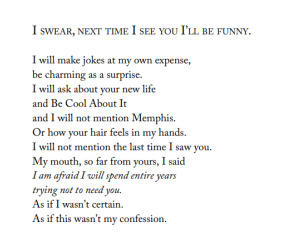
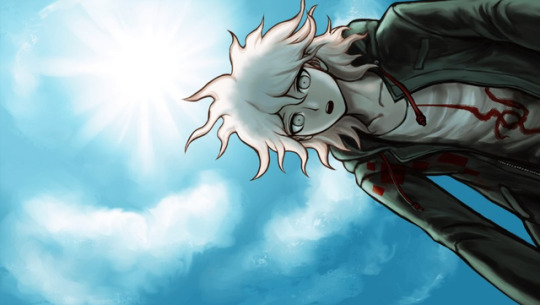
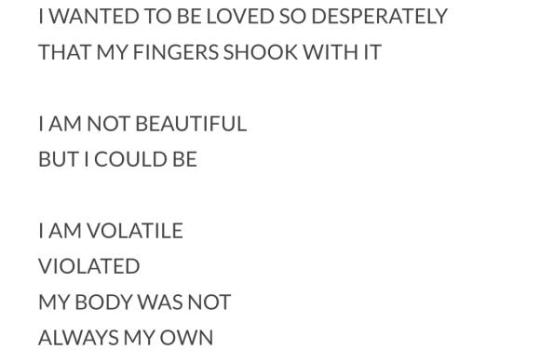

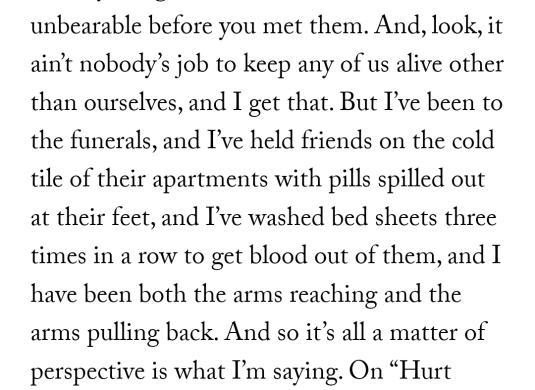

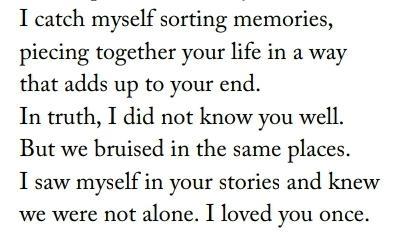

komahina
on love, marina tsvetaeva // i swear next time i see you i'll be funny, clementine von radics // danganronpa 2: goodbye despair // what i could never confess without some bravado, emily palermo // to the dead, frank bidart // on seatbelts and sunsets, hanif abdurraqib // danganronpa 3: the end of hope's peak highschool // angie, clementine von radics // the crane wife, cj hauser
#komahina#web weaving#compilations#comparatives#nagito komaeda#hajime hinata#poetry#comp#danganronpa#sdr2#marina tsvetaeva#clementine von radics#emily palermo#frank bidart#hanif abdurraqib#cj hauser
348 notes
·
View notes
Photo

CRUELLA 2021
And I tried. I really, I tried because I loved you. But the thing is, I'm not sweet Estella, try as I might. I never was. I'm Cruella, born brilliant, born bad, and a little bit mad.
#cruella#2021#emma stone#emma thompson#joel fry#paul walter hauser#emily beecham#kirby howell baptiste#mark strong#john mccrea#kayvan novak#jamie demetriou
28 notes
·
View notes
Photo

#cruella#emma stone#emma thompson#joel fry#paul walter hauser#emily beecham#kirby howell baptiste#mark strong#craig gillespie#2021
17 notes
·
View notes
Text
Sun bleached flies by Ethal Cain is so Briseis
Book: For the Most Beautiful by Emily Hauser
#trojan war#retelling#briseis#greek mythology#for the most beautiful - Emily Hauser#books#books and reading#achilles#patroclus
3 notes
·
View notes
Text

Day 24:

Cruella (2021)
#30 days of disney#30 days of disney films#30 days of disney movies#disney#disney movies#disney films#day 24#cruella#emma stone#emma thompson#joel fry#paul walter hauser#emily beecham#kirby howell baptiste#mark strong
2 notes
·
View notes
Text

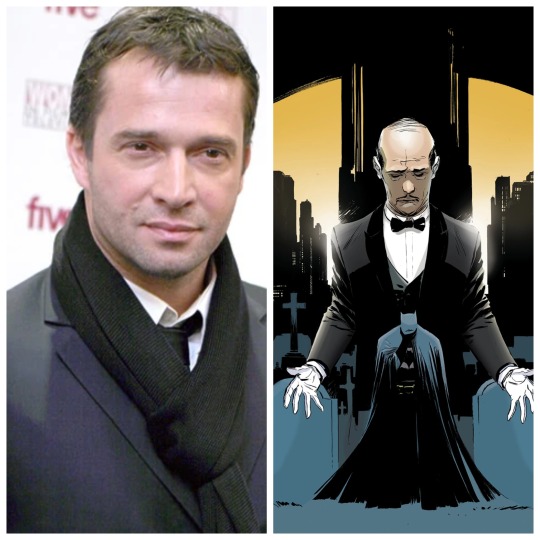
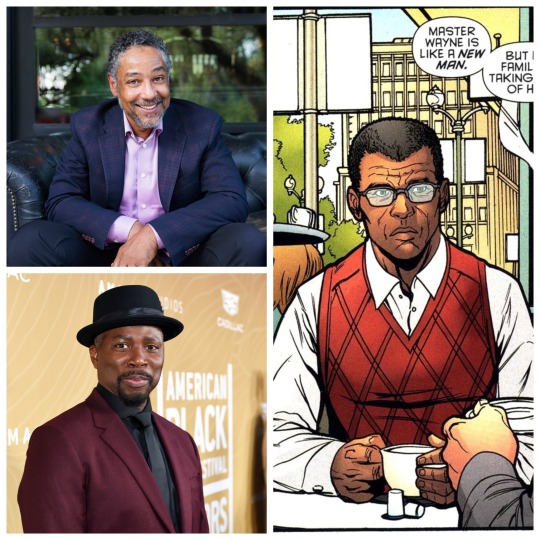

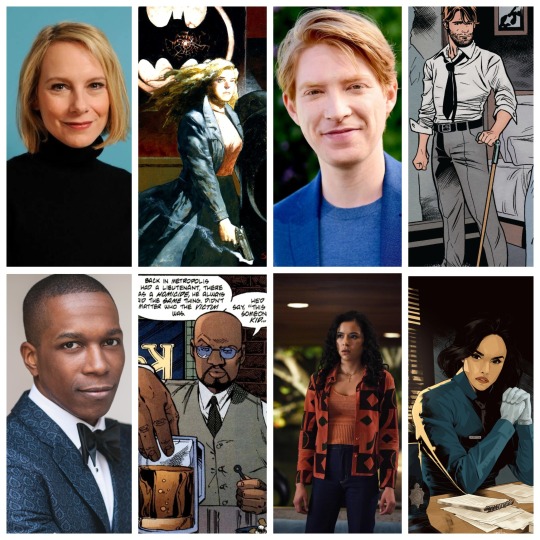
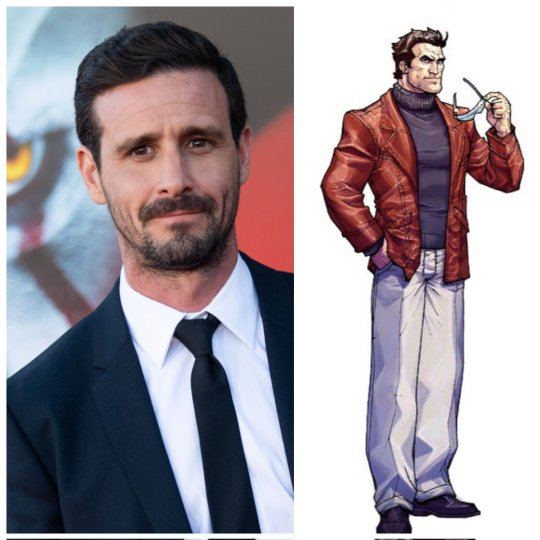
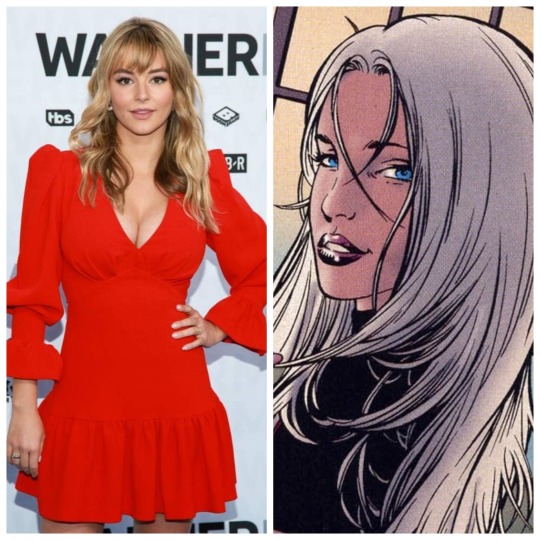
for The Brave and the Bold, i nominated Benjamin Bratt as Commissioner Jim Gordon, James Purefoy as Alfred Pennyworth, Giancarlo Esposito or Harold Perrineau as Lucius Fox, Cole Hauser as Harvey Bullock, Amy Ryan as Sarah Essen, Domhnall Gleeson as Jason Bard, Leslie Odom Jr. as Crispus Allen, Emily Rios as Renee Montoya, James Ransone as Jack Ryder and Hassie Harrison as Silver St. Cloud.
#The Brave and the Bold#Batman#Benjamin Bratt#Jim Gordon#James Purefoy#Alfred Pennyworth#Giancarlo Esposito#Harold Perrineau#Lucius Fox#Cole Hauser#Harvey Bullock#Amy Ryan#Sarah Essen#Domhnall Gleeson#Jason Bard#Leslie Odom Jr#Crispus Allen#Emily Rios#Renee Montoya#James Ransone#Jack Ryder#Hassie Harrison#Silver St. Cloud#DCU#fancast
1 note
·
View note
Text


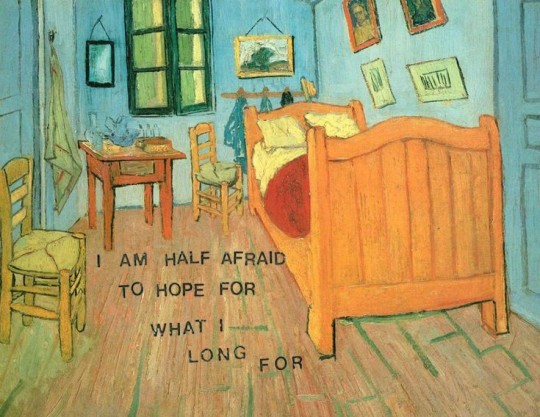


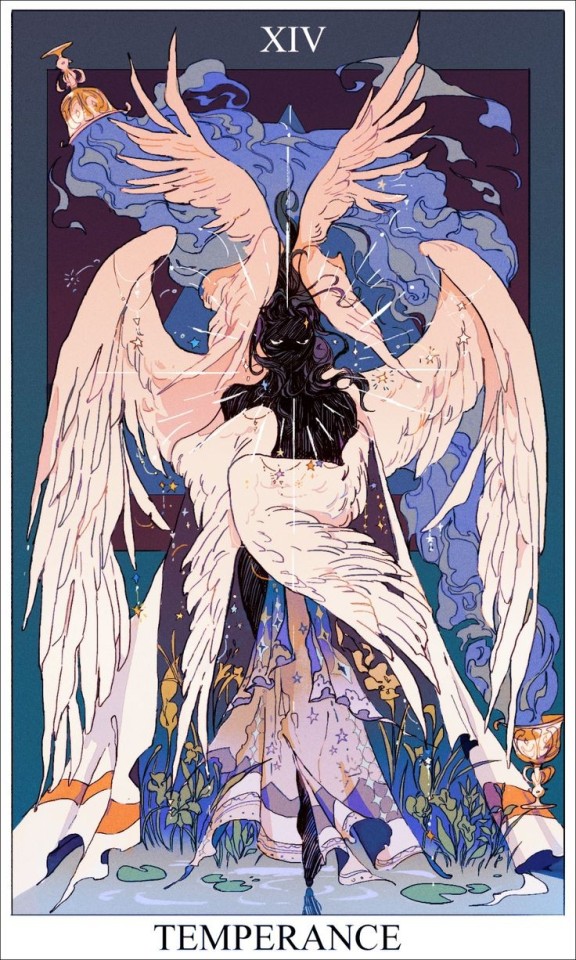


CJ Hauser, "The Crane Wife" // Alice Munro, "Lives of Girls and Women" // Emily Dickinson, "Letter 50" and Vincent van Gogh, Bedroom in Arles // Jennifer S. Cheng, "So We Must Meet Apart" // Last Words of a Shooting Star— Mitski // s-sublime on DeviantArt // @wingrefs // CJ Hauser, "The Crane Wife"
#theme: afraid of wanting#theme: shame#theme: making yourself small#web weaving#webs#aesthetic#art#poetry#writing#prose#prose poetry#song lyrics
169 notes
·
View notes
Text
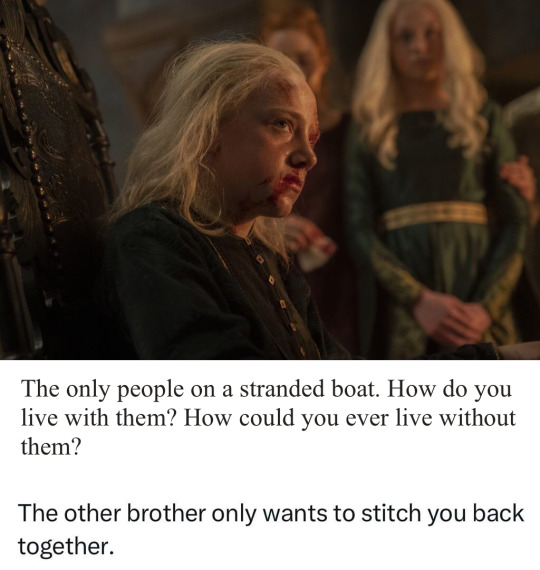
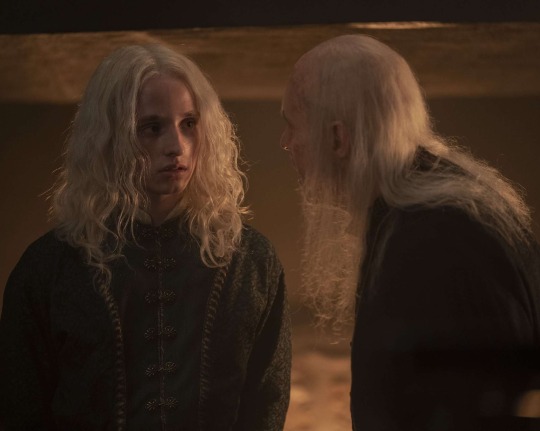


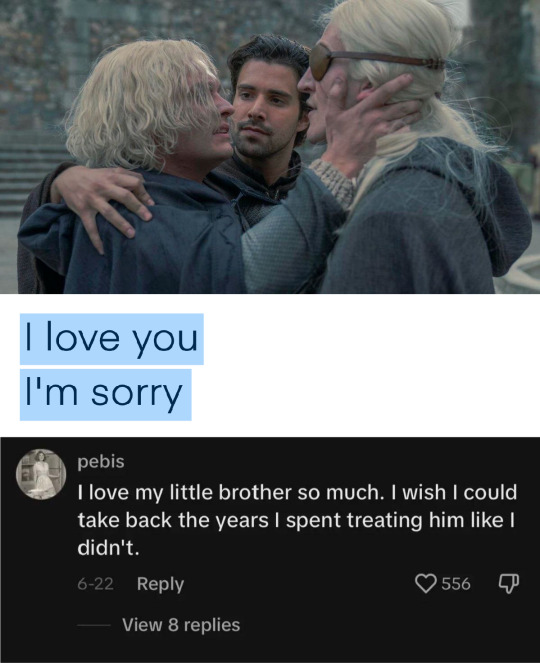

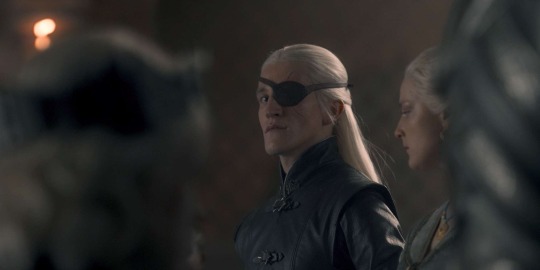
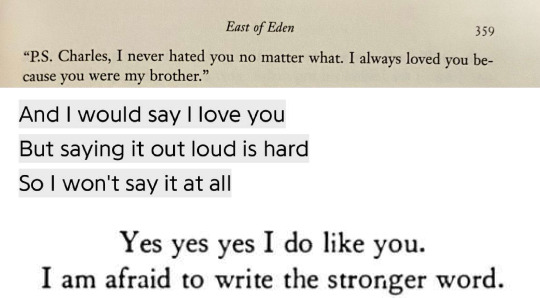


on aegon, aemond and love.
ritika jyala // richard siken // sophocles // hera lindsay bird // bob's burger // bojack horseman // natalia diaz // avett brothers // tiktok comments // marie lu // emily henry // john steinbeck // sufjan stevens // virginia woolf // orson scott card // georges bataille // c.j. hauser
#hotd#house of the dragon#aegon targaryen#aemond targaryen#web weaving#asoiaf#a song of ice and fire#web weave#hotdedit#webweaving#aegon ii targaryen#i am normal abt them and their relationship <- lying
94 notes
·
View notes
Text






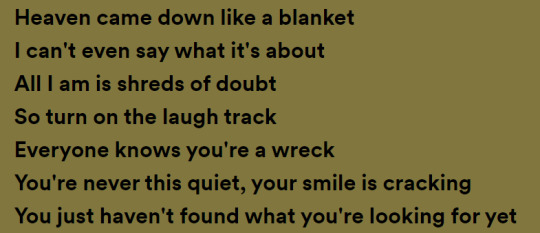



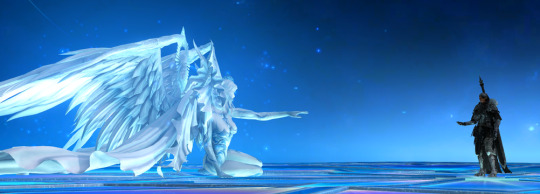









so—let us be about it, hero
chen chen, “god, gods, powers, lord, universe—” | david levithan, "how they met and other stories" | cj hauser, "the crane wife" | ada limón, "the hurting kind" | phoebe bridgers, "funeral" | toothachebench, "sun bleached flies" | tony kushner, "angels in america, part two: perestroika" | fleabag | georges bataille (tr. bruce boone), "guilty" | nikos kazantzakis | tomasz kawecki, "burning man" | disco elysium | alejandra pizarnik, (tr. yvette siegert), “[…] of the silence, extracting the stone of madness: poems" | emily dickinson, "the complete poems of emily dickinson" | stevie smith, "harold's leap"
#misc#ff#drax aemyar#web weaving#any tragedy enjoyers? (ringing bell) tragedy enjoyers? hello?#ffxiv
30 notes
·
View notes
Text

Triclinia (three couches set around a table, where guests would recline), set up in front of frescoes such as this, were the perfect place for Pompeians to gain new perspectives on old stories.
Every couch gave you a different point of view on the myth. Sit on one side, and you’d be faced with the image of Helen’s very first encounter with Paris. Is Paris’ outstretched arm an invitation or a threat? Is there a sense that Helen is lingering, uncertain, with that back foot scraping behind her?
Homer’s epics – the first to tell Helen’s story – are ambivalent about whether Helen was raped by Paris or went to Troy of her own accord. This painter seems to be exploiting that ambivalence.
—Emily Hauser, “Newly uncovered Helen of Troy fresco shows Pompeii’s elite were eager for ancient Greek stories about women”
The Rhaegar and Lyanna of it all…I think it’s ultimately pretty clear that Lyanna went with him of her own accord, but I love that you have to piece together what really happened from different characters’ points of view and from Meera’s fairy tale and even then we still don’t know everything
10 notes
·
View notes
Text
2023 Screen Actors Guild Awards — Winners
Outstanding Performances in a Motion Picture
Cast
Babylon
The Banshees of Inisherin
Everything Everywhere All at Once — WINNER
The Fabelmans
Women Talking
Female Actor in a Leading Role
Cate Blanchett (Tár)
Viola Davis (The Woman King)
Ana de Armas (Blonde)
Danielle Deadwyler (Till)
Michelle Yeoh (Everything Everywhere All at Once) — WINNER
Male Actor in a Leading Role
Austin Butler (Elvis)
Colin Farrell (The Banshees of Inisherin)
Brendan Fraser (The Whale) — WINNER
Bill Nighy (Living)
Adam Sandler (Hustle)
Female Actor in a Supporting Role
Angela Bassett (Black Panther: Wakanda Forever)
Hong Chau (The Whale)
Kerry Condon (The Banshees of Inisherin)
Jamie Lee Curtis (Everything Everywhere All at Once) — WINNER
Stephanie Hsu (Everything Everywhere All at Once)
Male Actor in a Supporting Role
Paul Dano (The Fabelmans)
Brendan Gleeson (The Banshees of Inisherin)
Barry Keoghan (The Banshees of Inisherin)
Ke Huy Quan (Everything Everywhere All at Once) — WINNER
Eddie Redmayne (The Good Nurse)
Stunt Ensemble
Avatar: The Way of Water
The Batman
Black Panther: Wakanda Forever
Top Gun: Maverick — WINNER
The Woman King
Outstanding Performances in Television
Ensemble in a Drama Series
Better Call Saul
The Crown
Ozark
Severance
The White Lotus — WINNER
Female Actor in a Drama Series
Jennifer Coolidge (The White Lotus) — WINNER
Elizabeth Debicki (The Crown)
Julia Garner (Ozark)
Laura Linney (Ozark)
Zendaya (Euphoria)
Male Actor in a Drama Series
Jonathan Banks (Better Call Saul)
Jason Bateman (Ozark) — WINNER
Jeff Bridges (The Old Man)
Bob Odenkirk (Better Call Saul)
Adam Scott (Severance)
Ensemble in a Comedy Series
Abbott Elementary — WINNER
Barry
The Bear
Hacks
Only Murders in the Building
Female Actor in a Comedy Series
Christina Applegate (Dead to Me)
Rachel Brosnahan (The Marvelous Mrs. Maisel)
Quinta Brunson (Abbott Elementary)
Jenna Ortega (Wednesday)
Jean Smart (Hacks) — WINNER
Male Actor in a Comedy Series
Anthony Carrigan (Barry)
Bill Hader (Barry)
Steve Martin (Only Murders in the Building)
Martin Short (Only Murders in the Building)
Jeremy Allen White (The Bear) — WINNER
Female Actor in a Television Movie or Miniseries
Emily Blunt (The English)
Jessica Chastain (George & Tammy) — WINNER
Julia Garner (Inventing Anna)
Niecy Nash-Betts (Dahmer - Monster: The Jeffrey Dahmer Story)
Amanda Seyfried (The Dropout)
Male Actor in a Television Movie or Miniseries
Steve Carell (The Patient)
Taron Egerton (Black Bird)
Sam Elliott (1883) — WINNER
Paul Walter Hauser (Black Bird)
Evan Peters (Dahmer - Monster: The Jeffrey Dahmer Story)
Stunt Ensemble in a Comedy or Drama Series
Andor
The Boys
House of the Dragon
Lord of the Rings: The Rings of Power
Stranger Things — WINNER
Lifetime Achievement Award
Sally Field
78 notes
·
View notes
Text
All Identity V references (or easter eggs) to popular culture found.
Some are taken from theories of fandom others are found by me.
Martha Remington as the surname taken from the typewriter brand "remington" (also curious beacause in the game you have to decode typewriters)
Doctor, Emily Dyer is inspired by Amelia Dyer a british serial killer who killed lots of young children while beyond her cares.
Helena Adams references to Helen keller, a blind def woman who were a full-time activist.
Priestress (Fiona Gilman) references to HP Lovecraft's story "The dream in the witch's house."
The Magician references to Servais le roy, the creator of the illusion technic of levitation.
Naib Subedar, in his backstory makes reference to the british invasion of india.
Thief, Kreacher Pierson references George Müller, a Christian evangelist and the director of the Ashley Down orphanage in Bristol, England. He was one of the founders of the Plymouth Brethren movement. His surname is named after Arthur Tappan Pierson, a friend of George Müller who wrote his biography.
The explorer references to Gulliver's Travels.
William Ellis references William Webb Ellis, the alleged inventor of rugby. He also shares the exact same name as him
Norton Campbell's background story references the author H.P Lovecraft's short story titled The Transition of Juan Romero.
Enchantress, Patricia Dorval's adoptive mother references Marie Laveau a Louisiana Creole practitioner of Vodou, herbalist and midwife who was renowned in New Orleans.
Wilding, Murro's Deductions mentions Kasper Hauser, a German youth who claimed to have grown up in the total isolation of a darkened cell.
Female Dancer, Margaretha Zelle references both Mata Hari, a Dutch exotic dancer and courtesan who was convicted of being a spy for Germany during World War I and Natalia from The Last Circus.
Acrobat, Mike Morton's appearance references both Arlecchino from Commedia dell'arte and Vander Clyde Broadway an American female impersonator, high-wire performer, and trapeze artist born in Texas.
"Prisoner", Luca Balsa references Nikola Tesla a Serbian-American inventor, electrical engineer, mechanical engineer, and futurist best known for his contributions to the design of the modern alternating current (AC) electricity supply system.
Entomologist, Melly Plinius references Pliny the Elder (Gaius Plinius Secundus) the Roman author/naturalist/natural philosopher.
Batter, Ganji Gupta's background story references the British Colonization of Indian Subcontinent (1858-1947).
"Psychologist", Ada Mesmer's Surname references Franz Anton Mesmer, a German physician who developed the theory of animal magnetism. She may also be inspired in Ada Lovelace the matematician
Soul Weaver, Violetta references Aloisia 'Violetta' Wagner, a famous German freak show performer from the early 20th century. She was renowned for having tetra-amelia syndrome.
The Ripper, Jack references Jack the Ripper an unidentified serial killer active in the impoverished districts in and around Whitechapel in the East End of London in 1888. His background story references Walter Sickert, a German-born British painter and print maker who was a member of the Camden Town Group of Post-Impressionist artists in early 20th-century London and was suspected of being Jack the Ripper.
Geisha, Michiko references Chōchō-San from Madame Butterfly. She may also reference Yosano Akiko or Higuchi Ichiyo, both famous writers and geishas. But not only, she may reference the play of Fukuchi Ochi "Mirror Lion" .
Hastur is based on The King in Yellow from H.P. Lovecraft novels (Cthulhu Mythos Franchise).
Wu Chang, Xie Bi'an and Fan Wujiu references Heibai Wuchang (黑白无常, Black and White Impermanence) the two Deities in Chinese folk religion in charge of escorting the spirits of the dead to the underworld.
Photographer, Joseph Desaulniers references both Nicéphore Niépce a French inventor, usually credited as the inventor of photography and a pioneer in that field and Dorian Gray from The Picture of Dorian Gray. His background story also mentions the French Revolution.
Mad Eyes, Burke Lapadura references Edmund Burke, a highly regarded Canadian architect best known for building Toronto's Prince Edward Viaduct or "Bloor Street Viaduct" and Toronto's Robert Simpson store.
Dream Witch, Yidhra references Yidhra from the H.P. Lovecraft novels (Cthulhu Mythos Franchise).
Bloody Queen, Mary references both Marie Antoinette the last queen of France and a controversal figure during the French Revolution and the abilities based on Bloody Mary.
"Disciple", Ann's background story references the Salem witch trials.
Violinist, Antonio references Niccolò Paganini an Italian violinist and composer. He was the most celebrated violin virtuoso of his time, and left his mark as one of the pillars of modern violin technique.
Sculptor, Galatea Claude possibly references Camille Claudel a French sculptor known for her figurative works in bronze and marble and her name references to the statue carved of ivory by Pygmalion of Cyprus of the same name from Greek Mythology.
"Undead", Percy references Victor Frankenstein from the author Mary Shelley's novel Frankenstein.
The Breaking Wheel, Will Brothers references the Breaking wheel with their trailer also referencing the Execution of St Catherine.
Naiad, Grace references Naiads, fresh water nymphs presiding over fountains, wells, springs, streams, brooks and other bodies of fresh water from Greek Mythology. She also appears to reference H.P. Lovecraft's novella The Shadow Over Innsmouth.
Wax Artist, Philippe is based on Philippe Curtius a Swiss physician and wax modeller who taught Marie Tussaud the art of wax modelling.
Hermit, Alva Lorenz references Thomas Edison, a famous inventor.
Night Watch, Ithaqua is based on Ithaqua from H.P. Lovecraft novels (Cthulhu Mythos Franchise).
"Big Daddy" is likely a reference to "Big Brother" from 1984 by George Orwell, the leader who keeps all citizens under constant surveillance and controls them.
Allen, while little is currently known about him, is likely based off Zadok Allen from The Shadow Over Innsmouth.
Andrea may be based on Antonia Bianchi, a singer and the long term lover of Niccolo Paganini.
Arthur Byers is likely based on Ambrose Bierce, the author of “Haïta the Shepherd” in which Hastur first appeared.[1]
Catherine is based on St. Catherine of Alexandria who was executed using a breaking wheel.
Christina's death scene in Philipe's character trailer is an allusion to The Death of Marat by French painter Jacques-Louis David.
Claude Desaulniers is based on Claude Niépce, the older brother of French inventor Nicéphore Niépce.
Damballa is based on the benevolent spiritual intermediary in Haitian Voodoo of the same name.
James Reichenbach's last name is a reference to Reichenbach Falls, the name of the location where Arthur Conan Doyle's character Sherlock Holmes had his fight to the death with his greatest foe Professor Moriarty.
James Whistler is based on the real life painter James Abbott McNeill Whistler who was the mentor of Walter Sickert.
Papa Legba is based on trickster spiritual intermediary in Haitian Vodou of the same name.
Princess Lamballe is based on Marie Thérèse Louise of Savoy (Princesse de Lamballe) who was one of Marie Antoinette's closest friends.
Robert is likely based off Robert Olmstead, the main character and narrator of The Shadow Over Innsmouth.
Sullivan is based on Anne Sullivan Macy, an American teacher and lifelong friend of Helen Keller.
The currently Unnamed Cat God is likely based on the short stories Nyarlathotep and Cats of Ulthar by H.P. Lovecraft.
Blue Aladdin references to Aladdin from Aladdin and the Wonderful Lamp.
Violet Peacock's Chinese description references to The Peacocks Fly Southeast.
Both Poseidon's Crown and Poseidon references to Poseidon the god of the sea, storms, earthquakes and horses from Greek Mythology.
Caged Butterfly's description mentions Madame Butterfly.
The 1st Essence of Season 2 is based on several Fairy Tale Stories on each Costumes.
King's Tailor references to one of the Swindler from The Emperor's New Clothes.
Both Lazy Mr. Bunny and Mr. Turtle references to The Hare and The Tortoise from The Tortoise and the Hare.
King Arthur references to the character of the same name
Merlin references to the character of the same name.
Black Swan is based on Odile (The Black Swan) from Swan Lake.
Anubis is based on the god of the same name who is the god of death, mummification, embalming, the afterlife, cemeteries, tombs, and the Underworld in Egyptian Mythology.
Ancient Soul references to the Ankh an ancient Egyptian hieroglyphic symbol used in Egyptian art and writing to represent the word for "life" and, by extension, as a symbol of life itself.
Soul Catcher references to Day of the Dead a holiday traditionally celebrated on November 1 and 2, though other days, such as October 31 or November 6 from Mexica.
Golden Touch is based on King Midas a king of Phrygia who is known to turn everything he touched into gold from Greek Mythology.
The 1st Essence of Season 6 has several references to Greek Mythology.
Icarus is named after and based on the hero of the same name who is the son of the master craftsman Daedalus, the creator of the Labyrinth on Greek Mythology.
Apollo is named after and based on the God of the same name who is the god of oracles, healing, archery, music and arts, sunlight, knowledge, herds and flocks, protection of the young and the Member of Twelve Olympians.
Leonidas is named after Leonidas I a king of the Greek city-state of Sparta.
Pam possibly is based on Pan the god of the wild, shepherds and flocks, rustic music and impromptus, and companion of the nymphs.
Captain Hook is based on Captain James Hook.
Eversleeping Girl is based on Wendy Darling.
Forgotten Boy is possibly based on Peter Pan or one of the Lost Boys.
Siren is possibly based on the Mermaids from Mermaids' Lagoon.
March Hare is based on the Character of the Same Name.
Alice is based on the Protagonist of the Same Name.
Mr. Bunny is based on The White Rabbit.
Bill is based on Bill The Lizard.
Caterpillar is based on Hookah-Smoking Caterpillar.
Knave of Hearts is based on the character of the same name.
Executioner is based on one of the Queen of Hearts' Card Soldiers.
The Mad Hatter is based on the character of the same name.
Queen of Hearts is based on the character of the same name.
Serpent is based on Quetzalcoatl the god of life, light and wisdom, lord of the day and the winds from Aztec Mythology.
Lady Thirteen is based on Yu Mo from The Flowers of War, portrayed by the actress Ni Ni.
Sophia is based on Sophia Palaiologina a Byzantine princess, member of the Imperial Palaiologos family, Grand Princess of Moscow as the second wife of Grand Prince Ivan III.
Ivan is possibly based on Ivan III of Russia a Grand Prince of Moscow and Grand Prince of all Rus'.
Maroon Crystal is based on Dorothy Gale.
Princess Ozma is based on the character of the same name.
The Wicked Witch is based on both Wicked Witch of the West and Dorothy Gale.
Emerald City Coachman is based on the Coachman.
Oz, the Wizard is based on Wizard of Oz.
The Tin Man is based on Tin Woodman.
The Spookcrow is based on Scarecrow.
The Toothless Lion is based on Cowardly Lion.
Golden Ratio references to the Philosopher's Stone a mythic alchemical substance capable of turning base metals such as mercury into gold.
Electrolysis references to the technique of the same name that uses direct electric current (DC) to drive an otherwise non-spontaneous chemical reaction.
Ouroboros references to the ancient symbol of the same name that depicts a snake or dragon eating it's own tail.
Choir Boy has a The squared circle symbol an alchemical symbol (17th century) illustrating the interplay of the four elements of matter symbolising the philosopher's stone on his back.
Mutation represents Chrysopoeia an artificial production of gold, most commonly by the alleged transmutation of base metals such as lead.
Sulfuric Acid has a tattoo on chest resembling the symbol of the same name based on Dalton's Law of Atomic Weights.
Vine references to the Elixir of life a potion that supposedly grants the drinker eternal life and/or eternal youth.
Philofelist possibly references to Necromancy a practice of magic or black magic involving communication with the dead – either by summoning their spirits as apparitions, visions or raising them bodily – for the purpose of divination, imparting the means to foretell future events, discover hidden knowledge, to bring someone back from the dead, or to use the dead as a weapon.
Judge represents Pride.
Deputy represents Greed.
Clerk represents Envy.
Court 3 Commissioner represents Wrath.
Court 5 Commissioner represents Sloth.
Court 6 Commissioner represents Gluttony.
Court 7 Commissioner represents Lust.
Narcissus is named after the character of the same name who rejected all romantic advances, eventually falling in love with his own reflection in a pool of water, staring at it for the remainder of his life, his name is the origin of Narcissism.
Clio is named after the goddess of the same name who is the goddess of history, lyre playing and a member of the Muses.
Talia is named after Thalia who is the goddess of comedy and a member of the Muses.
Hebe is named after the goddess of the same name who is the goddess of eternal youth, prime of life, forgiveness
"Succubus" is named after a demon of the same name they are female demons that appears in dreams to seduce men, usually through sexual activity.
Rainmaker's Beauty Form is based on both Lady Shizuka, one of the most famous women in Japanese history and literature and Ameonna, a yōkai thought to call forth rain while the Prajna Form is based on Kuchisake-onna, that appears as a malicious spirit, or onryō, of a woman, that partially covers her face with a mask or other item and carries some sort of sharp object.
"The Prince" is based on the titular character of the The Happy Prince.
Feathered Cloak is based on Freyja, a goddess associated with love, beauty, fertility, sex, war, gold, and seiðr (magic for seeing and influencing the future) from Norse Mythology.
The 3rd Essence of Season 17 is based on The Masque of the Red Death.
Man in Red is based on The Red Death.
Runaway is based on Prince Prospero.
The 1st Essence of Season 18 is based on The Marriage of Figaro.
Fury is based on both Count Almaviva (Philippe) and Countess Rosina (Christina).
"Susanna" is based on the character of the same name.
The 1st Essence of Season 20 is based on And Then There Were None.
The 2nd Essence of Season 20 takes place on The Crystal Palace on a fictional setting.
Lockheart is shown to be a fictional daughter of the in real life historical figure Joseph Paxton an English gardener, architect, engineer and Member of Parliament, best known for designing the Crystal Palace.
The 1st Essence of Season 21 is based on Bacchanalia, an unofficial, privately funded popular Roman festivals of Bacchus, based on various ecstatic elements of the Greek Dionysia.
Spring Heated Wine is based on Dionysus, the god of the grape-harvest, wine making, orchards and fruit, vegetation, fertility, insanity, ritual madness, religious ecstasy, festivity, and theatre and a Member of the Twelve Olympians from Greek Mythology.
Bai Ze is based on Bai Ze itself, a mystical Chinese beast connected with spirits.
The 3rd Essence of Season 22 is based on insects and also the seven virtues.
Winter Cicada represents Humility.
Frozen Butterfly represents Chastity.
Ant represents Charity.
Scorpion represents Kindness.
Mayfly represents Diligence.
Centipede represents Temperance.
Worker Bee represents Patience.
Boudoir Dream is based on Child Jane Hudson from What Ever Happened to Baby Jane which is a film adaptation of a novel of the same name, portrayed by the child actress Julie Allred
Iron Lady is based on Harriet Craig from the film of the same name which is a film adaptation of Craig's Wife, portrayed by the actress Joan Crawford.
Samara is based on Samarra from The Prodigal which is a film adaptation of Parable of the Prodigal Son, portrayed by the actress Lana Turner.
Rhythm of the Rain is based on Kathy Selden from Singin' in the Rain, portrayed by the actress Debbie Reynolds.
Recluse is based on Jef Costello from Le Samouraï, portrayed by the actor and filmmaker Alain Delon.
Hamlet is based on the titular character of the 1948 film which is the film adaptation of the play of the same name, portrayed by the actor and director Laurence Olivier.
Colonel Dax is based on the character of the same name from Paths of Glory which is a film adaptation of the novel of the same name, portrayed by the actor and filmmaker Kirk Douglas.
The Red Shoes is based on Victoria Page from The Red Shoes which is a film adaptation of a fairy tale of the same name, portrayed by the actress ballet dancer and actress Moira Shearer.
The Black Tulip is based on both Guillaume de Saint Preux and Julien de Saint Preux from The Black Tulip which is a film adaptation of the novel of the same name, both portrayed by the actor and filmmaker Alain Delon.
Just Around the Corner is based on Penny Hale from Just Around the Corner which is a film adaptation of Lucky Penny, portrayed by former child actress, singer, dancer, and diplomat and diplomat Shirley Temple.
Zouzou is based on the titular character of the 1934 film, portrayed by actress, French Resistance agent, and Civil Rights Activist Josephine Baker.
Ben-Hur is based on Judah Ben-Hur from Ben-Hur which is a film adaptation of Ben-Hur: A Tale of the Christ, portrayed by the actor and political activist Charlton Heston.
Dorothy is based on Dorothy Gale from The Wizard of Oz which is a film adaptation of The Wonderful Wizard of Oz, portrayed by actress and singer Judy Garland.
Salome is based on the titular character from the movie of the same name, portrayed by actress, dancer, and producer Rita Hayworth.
Da Vinci is based on Leonardo da Vinci from The Life of Leonardo da Vinci which is a miniseries about the real life artist, portrayed by actor Philippe Leroy.
Svengali is based on the titular character of the 1931 film which is a film adaptation of Trilby, portrayed by the actor on radio, stage and radio John Barrymore.
Rashomon is based on the Samurai's wife from Rashomon which is a film adaptation of two Ryūnosuke Akutagawa novels "In a Grove" and "Rashōmon", portrayed by the actress Machiko Kyō.
Broken Blossoms are based on Cheng Huan from Broken Blossoms which is a film adaptation of The C**** and the Child, portrayed by the actor Richard Barthelmess.
Scarlet is based on Scarlett O'Hara from Gone with the Wind which is a film adaptation of the novel of the same name, portrayed by the actress Vivien Leigh.
Faust is based on the titular character of the 1927 film which is a film adaptation of the play of the same name, portrayed by the actor, director and singer Gösta Ekman.
Million Dollar Mermaid is based on Annette Kellerman from the film of the same name which is a biography about the real life swimmer, portrayed by swimmer and actress Esther Williams.
#identity v#idv embalmer#idv#idv shitpost#easter eggs#so many references#idv easter eggs#identityv gameplay#identityv#idv gamekeeper#idv yidhra#idv geisha#idv fanart
34 notes
·
View notes
Text

Ida Applebroog, Photo: Emily Poole

IDA APPLEBROOG
Jessika, 2007
Mixed media on treated gampi
43.2 x 30.6 x 3.5 cm / 17 x 12 x 1 3/8 in
Courtesy Hauser & Wirth © Ida Applebroog
2 notes
·
View notes
Text
reading for the most beautiful by emily hauser and this book should be pulled from publication for ‘krisayis’
#you can take some liberties with transliteration but that is too many please put some back#especially if you say ‘briseis’ in the next chapter…..spare consistency can we please spare some consistency#ribbits
3 notes
·
View notes
Text
2023 Books
Originally I wasn't going to share the books I read this year on here, but then I changed my mind lol. It's convenient for me.
Read
The Red Scholar's Wake by Aliette de Bodard
The Sparrow by Mary Doria Russel
Anna Karenina by Leo Tolstoy
Giovanni's Room by James Baldwin
Family of Origin by CJ Hauser
Mermaid Scales and the Town of Sand by Komori Yoko
Luster by Raven Leilani
Such a Fun Age by Kiley Reid
You Could Make This Place Beautiful by Maggie Smith
Sunshine by Robin McKinley
Fluids by May Leitz
The Vegetarian by Han Kang
Convenience Store Woman by Murata Sayaka
The Half Moon by Mary Beth Keane
Legends and Lattes by Travis Baldree
Memorial by Bryan Washington
This Is How You Lose the Time War by Amal El-Mohtar and Max Gladstone
The Joy Luck Club by Amy Tan
Howl's Moving Castle by Diana Wynne Jones
Strike the Zither by Joan He
Deep as the Sky, Red as the Sea by Rita Chang-Eppig
The Salt Grows Heavy by Cassandra Khaw
Our Wives Under the Sea by Julia Armfield
The Virgin Suicides by Jeffrey Eugenides
The Death of King Arthur: The Immortal Legend by Peter Ackroyd
The Bookshop and the Barbarian by Morgan Stang
The Third Hotel by Laura Van Den Berg
Dune by Frank Herbert
Wicked Saints by Emily A. Duncan
Hell's Paradise by Kaku Yuji
Dungeon Meshi by Kui Ryoko
Ruthless Gods by Emily A. Duncan
Teaching My Mother How to Give Birth by Warsan Shire
Healing Your Inner Child: Re-parenting Yourself For a More Secure and Loving Life by Natasha Levinger
Witchcraft Therapy by Mandi Em
Bless the Daughter Raised by a Voice In Her Head by Warsan Shire
Celtic Mysticism by Tracie Long
A Certain Hunger by Chelsea G. Summers
Bookshops and Bonedust by Travis Baldree
Men in the Off Hours by Anne Carson
Ongoing
One Piece
Toilet-bound Hanako-kun by AidaIro
Dai Dark by Hayashida Q
Gokurakugai by Sano Uto
Witch Hat Atelier by Shirahama Kamome
11 notes
·
View notes